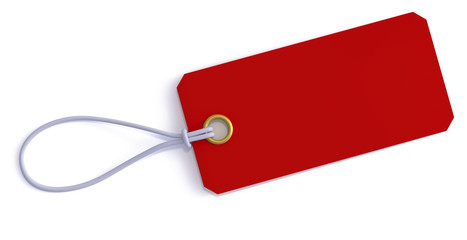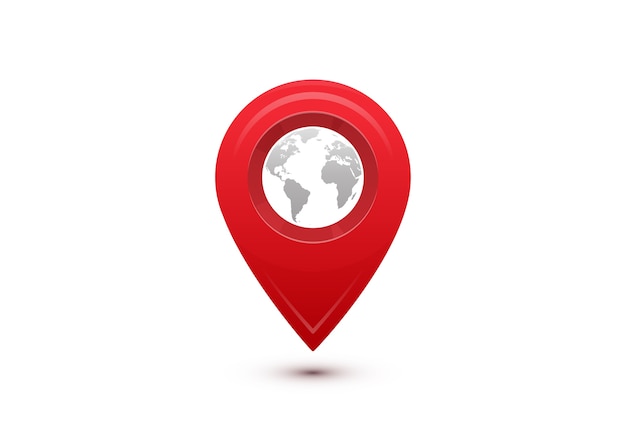4 Ps of Marketing: How to Use Them?
Understanding the marketing world is best done with the models. And in marketing, perhaps the best model to both understand and take action in the workplace is with the 4 Ps of the marketing model.
If you are familiar with the marketing industry in general, you might have heard the 4 Ps of the marketing model. However, as you may already guess, hearing about a concept is not the equivalent of knowing it. And even if you know the model, it might be challenging to apply it to your workspace.
In general, the 4 Ps of marketing is a model aimed to describe the major components of the marketing process, which involves price, product, place, and promotion. The origin of this model goes back to the 1960s. However, it is such a powerful model that succeeded in preserving its relevance in today’s marketplaces.
Today, we are here to share the details of the 4 Ps of marketing by taking a close look at each P in the model, how you can use this model in your marketing journey, and the benefits you will get from this model.
Without further ado, let’s get started to explore the world of the 4 Ps of marketing.

The 4 Ps of Marketing Model
Before digging deeper into the Ps, it would be best to understand the model a little more.
In the context of this model, product refers to what you sell; price refers to how much you sell the product, place refers to where do you do this, and promotion refers to how do you build a relationship with your customers or advertising.
Of course, this model is way beyond just explaining the 4 Ps used in marketing. The actual point is about how do you build the relationship between those concepts.
In other words, the 4 Ps of marketing explains how efficiently using the 4 Ps will lead eventually and inevitably higher sales and hence, success.
Today, the 4 Ps model is used by many big companies and businesses to define and describe the needs and goals of their businesses.
Remember, it is not as easy as it sounds. Every business is unique to its own characteristics and would require a lot more effort than it appears. It is not a bad thing, though; it just means that you need to learn about this model as detailed as possible to avoid any future inconveniences.
It would be best to take a deeper look at each P to understand the model.
Product

The first P of the 4 Ps model is the product. We mentioned that product refers to the thing you are selling. It can be a physical product, an online product, your own presence on the media, or a service. It really does not matter at all.
Of course, a product in the 4 Ps of the marketing model is not just deciding on which product you will sell; most businesses already know that. If you do not, it is okay; you can still use the 4 Ps of the marketing model to decide on one.
To understand the first P of this model, let’s try to understand what a product is. It might sound like a silly question, but think about it, how can you answer the question “what a product is” without saying that “it is something you sell”?
A product is anything that aims to fulfill the necessity or a desire of a target audience. To master your first P, you should have a clear definition and a picture of exactly how your product satisfies a need or want. That would be your most powerful tool to stand out from all the others who offer a substitute if done correctly.
Even though you know what you are selling, the work in the product aspect is not done yet. There are several questions you need an answer to be crystal clear about your product.
First of all, we mentioned how crucial it is to step up from your product’s substitutes and the alternatives people can buy to get the same product or service. Why would people need to choose your brand over others?
To answer this question, you need to define your place in the competition. The answer cannot be “we are not different from others, but we want people to choose us.” You have to have a difference.
To make a difference, you can focus on different aspects of the product. Maybe add another characteristic that other brands do not have; an improvement to the current market.
Or, try to put your product’s difference through your brand image. At the end of the day, people are not just getting the product; they are getting your product.
Another question to ask yourself is the size of the market you are in. Defining your place in the market is a must for every aspect of any given business, and knowing the size of the market will exactly give you this. Are there many businesses that do the same or similar thing to yours, or are you offering something unique and needs to be advertised more?
The next question to answer after knowing the size of the market is getting to know its characteristics. In any given market, there will be certain demands and values you need to be aware of.
If you are missing this point, then your marketing journey will be very much challenging. At some point, marketing is a competition, and if you do not know how your running track looks like, how can you expect to finish it first?
Last but definitely not least, you need to know who your target market is for your products. There is no marketing plan without a target audience. All your efforts and actions will be towards winning the trust of your target audience. You cannot do that if you do not know who they are.
Price

The second P of the 4 Ps model is price. As we mentioned earlier, price is the cost that the customers will pay, and there are many determinators of a price in any given business.
Not only do you have to consider what customers are willing to pay, but you have to consider the costs of producing your product. At this point, the economic term plasticity finds us. Price plasticity is a term used to describe how stretchy the demand will be as a response to a change in the price.
For example, if the price of a coffee brand goes up, it is most likely that the demand for it will decrease because there are many other alternatives for it. If you are at the beginning of your marketing journey, you have to consider your alternatives and why people would pay you an above-average market price.
Of course, it is not all about the price your competitors put into similar services or products. Some new businesses intentionally put high prices on their products to create a luxurious brand image. In that case, your marketing plan should be aimed more at creating that image of luxury to be successful.
Nobody will be willing to pay something above the market price if you offer nothing other to them. If there were no such a thing as brand image, nobody would pay millions of dollars to a Birkin bag, but they do.
At this point, it all comes back to your target audience. While getting to know your target audience, you must research how much they are willing to pay and how much they can actually afford.
We must say that some brands go a little bit brutal in this point, but aims to those who want to look rich in addition to those who are actually rich. In fact, it is not brutal when you think about it. It is only human psychology.
Deciding on a price might seem complicated and challenging, but in reality, it just needs research and effort. To wrap things up, the following are the most important things while deciding on a price for your products:
- The price of your competitors
- The income of your target audience
- The amount your target audience is willing the pay
- The price range indicates “poor quality” and “luxury.”
- Your profits
- Your brand image to your customers and competitors
The second P of the 4 Ps model is price. As we mentioned earlier, price is the cost that the customers will pay, and there are many determinators of a price in any given business.
Not only do you have to consider what customers are willing to pay, but you have to consider the costs of producing your product. At this point, the economic term plasticity finds us. Price plasticity is a term used to describe how stretchy the demand will be as a response to a change in the price.
For example, if the price of a coffee brand goes up, it is most likely that the demand for it will decrease because there are many other alternatives for it. If you are at the beginning of your marketing journey, you have to consider your alternatives and why people would pay you an above-average market price.
Of course, it is not all about the price your competitors put into similar services or products. Some new businesses intentionally put high prices on their products to create a luxurious brand image. In that case, your marketing plan should be aimed more at creating that image of luxury to be successful.
Nobody will be willing to pay something above the market price if you offer nothing other to them. If there were no such a thing as brand image, nobody would pay millions of dollars to a Birkin bag, but they do.
At this point, it all comes back to your target audience. While getting to know your target audience, you must research how much they are willing to pay and how much they can actually afford.
We must say that some brands go a little bit brutal in this point, but aims to those who want to look rich in addition to those who are actually rich. In fact, it is not brutal when you think about it. It is only human psychology.
Deciding on a price might seem complicated and challenging, but in reality, it just needs research and effort. To wrap things up, the following are the most important things while deciding on a price for your products:
- The price of your competitors
- The income of your target audience
- The amount your target audience is willing the pay
- The price range indicates “poor quality” and “luxury.”
- Your profits
- Your brand image to your customers and competitors
Place

The third P of the 4 Ps model is place. Place refers to the environment; how and where will you sell your products. This includes the actual place your products will take place (online, real life, app…) and the delivery aspect.
You should keep in mind that place is not all about how nice it looks. It is also about where your audience is. There is a reason why schools are surrounded by stationery shops, and photographers’ surrounding area is full of coiffeurs.
Of course, there is more than just where your customers are. You have to think about the shopping habits of your customers. Are they willing to take the stairs to come and see your products, or will they walk away as they see you do not have an elevator? Will they come with kids and a stroller, or will they be alone?
You have to think about the shopping experience you will offer to your audience at this point. Because if there is one thing that overruns the product you are selling, it is the experience you are offering.
Regarding the place and experience, there is one more thing you need to consider. It’s whether if you are going to offer assistance to your customers or not. Luxury brands such as Pandora would have highly involved and knowledgeable to offer you the best products, whereas you do not expect such a service at Target.
Another thing you need to consider is the cost-efficiency of the place. Of course, you have to have a specific budget to create and preserve your location. You have to be careful that it will be worth the price.
You may think that the place aspect is only valid for real-life shops. This is a common misconception since your presence in online channels values a lot – perhaps equally valuable as your real-life presence as a shop.
Because social media will be your tool to reach your customers, you need to be in places where they are. Of course, you can have an online shop or a Shopify site, but expecting them to come to find you in search engine results without putting any effort is something unattainable and unrealistic.
So, your presence in the social media and web creates the “place” aspect of your online business (it is also relevant for real-life shops, too). Specific applications and means of social media are known to have specific demographics.
For example, if you are aiming at teenagers and people in their early 20s, there are no better options than TikTok and Instagram. If you want to reach a larger audience by consistently producing quality content, you might prefer Twitter or blogs.
The thing is, the algorithms of social media platforms work wonders. However, they are very much specific, and you have to be specific too, to be able to reach who you want.
For example, TikTok is a nice place for teenagers and young adults, as we mentioned earlier, but there are zillion content types and “for you page varieties.” Those varieties are typically expressed as “A TikTok, B TikTok….” For instance, a person claims to be on “business TikTok” if they are interested in content related to the business by any means.
This works for all kinds of social media channels. To reach who you want, it would be best to create consumer personas and work towards them. For example, if you are selling hair products, haircare TikTok will be your place.
You will see how the place is strongly related to promotion in the following heading.
The last thing you would want to consider regarding the place is the type of your product. If you are offering a non-physical product, like Chrome add-ons, you would not want to choose a real store to sell it. You do not need it, and it does not make sense. Who would stop by a shop to get Grammarly premium? It needs to be online.
Promotion

The last P of the 4 Ps model is promotion, which refers to the strategy you will need to follow to spread your message and well, promote your products.
You have a product, you defined a price, and you have a place. Excellent. But how will people find you?
Sitting in your shop and waiting for customers to come is an option (a terrible one), but following a method and a plan to attract customers to your products and services is a perfect option.
Luckily, there is a billion way of promoting your products.
But how do you choose one? It is known that the promotion part of the 4 Ps model is the most valuable one and typically the one that brings the most results. Not to freak you out, but you would not want to mess promotion part.
There are several questions you might need to find an answer to for a successful promotion stage in your marketing journey. Those questions can be listed as follows:
Where is your target audience? (remember the relationship between place and promotion we discussed?)
- Who is your target audience?
- How will you communicate with your target audience?
- What is the message you want to deliver?
- What are the ways your competitors deliver their message and promotes?
- When will you promote your products?
- What will be the costs of promotion?
- Which strategies will you use?
- What does the buying journey look like for your product?
Some of the questions in this list are those who were (hopefully) answered in the former Ps of the 4 P model. It is crucial to know the answers to those questions to succeed in your promotion part.
There are other vital points that you would want to consider. First of all, you should note that many people prefer Google to search for stuff. For this reason, it might be plausible to consider having a blog in which you create informative, entertaining, and valuable content for your target audience.
You would want to make sure that people see your content as they search for specific keywords, leading to search engine optimization. You would want to optimize your content with SEO tools and methods to master this art.
Secondly, the power of social media cannot be overlooked. The people who are not searching for products on Google are most likely active in social media. Encountering them with your presence on social media channels will increase your chances of finding your target audience and promote your products.
At this point, creating content that would interest your target audience is critical. We have talked about the places you will find them, but the content of your content (if that makes sense) is as valuable as the place you are offering it.
For example, we talked about the algorithms of social media platforms and how specific they are. Regarding the content, you need to think more in-depth about your target audience’s characteristics.
Are they looking for entertaining or informative content? Do they like jokes and sincerity or value professionalism and eliteness? The answer to those questions will help you to build the type of content you want to create, which will be the perfect match.
Using the 4 Ps of Marketing
Now that you detailly know the 4 Ps of marketing, it’s time for the most crucial part: how to use it. Of course, as we mentioned several times earlier, every business is unique by nature, and the footsteps you will follow will not be the same.
However, it is always possible to create a general outline for what to do. We will briefly explain how to use the 4 Ps of marketing to wrap things up for the last time.
First, you would want to start by identifying your services and products. Then, you would want to find clear answers to the questions we mentioned in each section. The trick is being as detailed as possible not to miss any points.
After that, you would want to emphasize how the customer will think and behave. Imagine that you are a customer who never heard about your products and genuinely think whether if your actions are satisfactory enough for them to get the message and hopefully make a purchase.
While thinking about that, considering their needs, preferences, desires, tastes, wealth, opportunities, and alternatives will give you more insight.
It does not end here. You need to actively keep track of your plan and make changes when needed. Remember, marketing constantly evolves (especially the promotion side), and you would not want to be behind.
FAQ
What are the 4 Ps of marketing?
4 Ps of marketing is a marketing model which focuses on price, product, promotion, and place. Those 4 Ps are used in balance and interact with each other for the best possible results.
How do you use the 4 Ps of marketing?
Using the 4 Ps of marketing is possible through knowing each step and answering the relative questions in each P. Then, by combining everything you learned about the process, creating a successful and solid marketing strategy.
What are the 4 Ps of marketing examples?
The 4 Ps of marketing include product, price, place, and promotion. If we were to say “coffee” to the product, then the price could be two dollars, the place could be a coffee shop, and promotion could be social media marketing.
What is a marketing mix strategy?
Marketing mix strategy is a term used to describe the 4 Ps of the marketing model. In other words, marketing mix strategy and the 4 Ps of the marketing model are the same things.